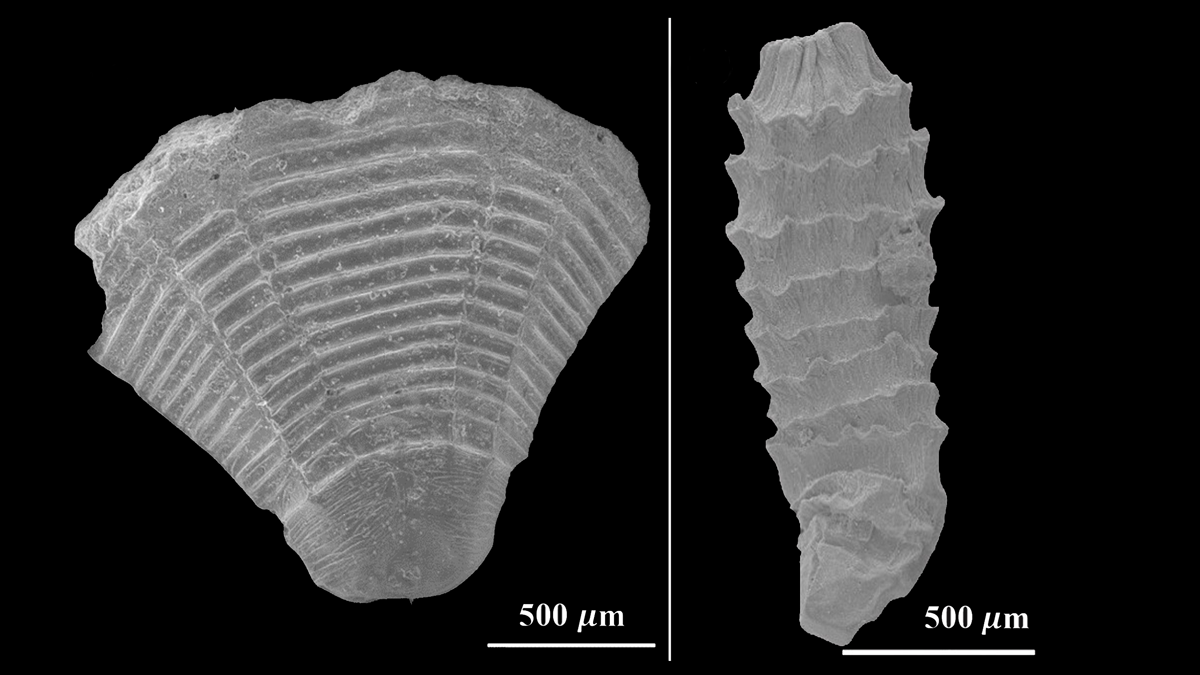Source: Journal of Geophysical Research: Biogeosciences
About 536 million years ago, in the early Cambrian period, an abundance of different species of millimeter-scale marine organisms thrived in continental shelf habitats around the world. Today, their fossils yield clues to ancient ocean conditions and animal evolution.
Many of these tiny fossils are sedentary medusozoans, a subgroup of the phylum Cnidaria that now includes free-swimming jellyfish. New research by Liu et al. reveals for the first time how the exoskeletal shapes of ancient, minuscule medusozoans may have interacted with flowing water in their marine shelf environment.
The researchers collected fossils of two species, Hexaconularia sichuanensis and Quadrapyrgites quadratacris, from the 535-million-year-old Kuanchuanpu Formation in southern Shaanxi Province in China. The fanlike shape of Hexaconularia exhibits biradial symmetry, whereas Quadrapyrgites is tetraradial.
The researchers used microcomputed tomography data of the fossils to create virtual 3D models of each species, then applied computational fluid dynamics to simulate how the flow of seawater would have dragged and contorted the organisms when they were alive. The simulation results suggested that the two species—and most other sedentary, millimeter-scale medusozoans from the same time—likely lived in the viscous flow layer, a less turbulent layer of seawater just above the seafloor. In addition, the biradial shape of Hexaconularia proved to be more structurally stable in the simulations than the tetraradial Quadrapyrgites, suggesting that Hexaconularia may have been better adapted to survive in the strong-flow conditions of the ancient marine shelf.
The findings are in line with fossil records suggesting that tetraradial sedentary medusozoans, as well as those with tri-, penta-, or hexaradial symmetry, went extinct about 529 million years ago but that Hexaconularia and other biradial medusozoans survived.
This study marks the first application of computational fluid dynamics to early Cambrian microfossils living in the viscous flow layer. The authors suggest that future research could introduce more details into such simulations, such as seafloor roughness and the presence of neighboring organisms, to further explore this ancient medusozoan community. (Journal of Geophysical Research: Biogeosciences, https://doi.org/10.1029/2022JG006854, 2022)
—Sarah Stanley, Science Writer

